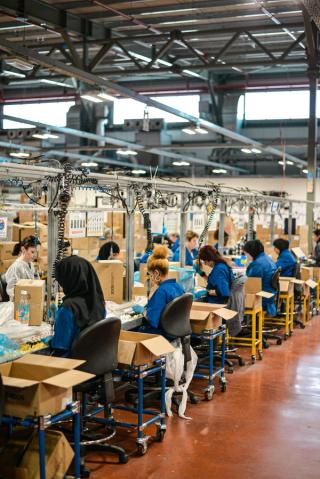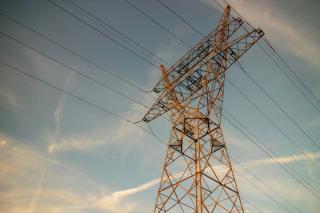
The next evolution in sustainability reporting: Why people are the new measure of resilience
by Jessica Barua
View post

The SLR data centre thought leadership series continues with a short three-part focus on the power grid. Part one of this power grid series focuses on some of the key grid challenges and trends in the nexus of data centre operators, grid availability and renewables integration.
Other Insights published so far in this three-part focus on the power grid:
Explore our other data centre topics:
Power availability has become the defining factor in successfully delivering data centre infrastructure, especially amid the AI-driven surge in digital demand. Across the UK and other mature markets, this increasing demand for digital capacity is colliding with a highly constrained power system. According to the IEA1, data centres are expected to form 3-4% of global electricity demand by 2035, with 6% in the US, 6% in China and 3-4% in Europe. This rapid growth has caught many off guard.
Already, grid congestion, rising connection times, and shifting regulatory frameworks are creating urgent challenges for data centre developers looking to develop sites in a timely fashion. In mature markets, demand-side grid connections are now often faster to secure than generation-side connections. As a consequence, some developers are repurposing generation or storage grid connections for data centre or industrial demand use cases to balance over supply and under demand at key network nodes. An example of this is the high curtailment of offshore and onshore wind farms. Typical in northern hemispheres, the best wind resource is in the north, but the largest demand is in the south. This creates a north-south grid transport constraint that increases during a low carbon energy transition. This includes, for example, countries such as the UK, Germany, Norway, Sweden, USA, Japan and China. These can be mitigated to an extent by locating large demand centres at these supply nodes. This is not a new idea, as we have seen with colocation of green hydrogen and/or battery storage with wind farms to use surplus electricity generation when local demand and pricing is low. This is then stored and released back to the grid when demand and pricing is high. From a grid-balancing perspective, adding demand where there is over supply is beneficial; adding demand where there is already strain is not. SLR’s grid team can assess the impact of shifting a site from an exporting to an importing profile, helping clients make informed decisions.
At SLR, we specialise in helping data centre clients navigate these challenges - whether developing greenfield or brownfield sites, or converting an existing energy project. We provide expertise across:
Our goal is to accelerate your route to Final Investment Decision (FID), optimising site selection, while ensuring long-term energy access and sustainability compliance.
Data centres typically require substantial and highly reliable power supply, often in the range of 50 to 500 MW per site and over 1GW in some regions. They can be developed on a phased basis in response to demand. However, in many areas of the UK and other mature markets, transmission and distribution infrastructure are already at or near capacity. The traditional stomping ground of data centres in the Frankfurt, London, Amsterdam, Paris and Dublin (FLAP-D) region is near or at capacity. Conversely, in less mature markets, the challenge is often underdeveloped infrastructure rather than over subscription. A possible future scenario to deal with this is through the market where data centre leasing costs increase - where low latency is absolutely paramount - such as in financial trading whereby trades take nano seconds. Other occupiers where low latency is less of a requirement would quickly become outpriced and have to look further afield, in new locations further away from the FLAP-D areas where there may be higher latency but adequate for their operations. Grid connection queues, particularly for generation, are lengthening, and reinforcement timescales of five or more years are commonplace with escalating capital costs.
This context is compounded by competing infrastructure demand. Renewable energy developers, the decarbonisation of transport and heat, and industry at large are all pursuing new grid connections and infrastructure. This is leading to capacity and human capital blockages in key markets. For data centre developers, this causes a power bottleneck that can significantly delay programme schedules and capital investment.
Unique for data centres, power quality, and not just balancing power supply and demand is crucial for data centres. This is to ensure that highly capital-intensive data centre computing and storage equipment is not damaged leading to costly downtime. To address this critical data centre power requirement, SLR provides preliminary power systems design scoping and technical advisory to ensure end-to-end solutions that deliver resilient, power-quality-compliant deployment of these technologies in sensitive data centre environments. Additionally, we offer expert guidance on hybrid system integration - where various inverter-based and storage sources are combined with existing generation assets in both grid-connected, hybrid and off-grid configurations - tailored to reliably support data centre operations as they scale-up over time.
SLR supports data centre clients with early-stage power system design and technical advisory, ensuring resilient, power-quality-compliant solutions tailored for sensitive environments. We also provide expert guidance on integrating hybrid systems - combining inverter-based, storage, and traditional generation assets - across grid-connected, hybrid, and off-grid setups to support scalable operations.
We work closely with data centre developers, investors, and utilities to unlock grid access and develop holistic power strategies. As data centres, the grid, and renewables converge, SLR is playing a pivotal role in aligning these sectors for shared success.
Our multidisciplinary team brings together geospatial site selection (informed by machine learning geospatial analysis and techno-economic risk analysis), grid and power systems expertise, planning and permitting, owner’s engineer and asset management expertise.
Using network data, stakeholder engagement, and strategy, we help clients understand existing and future available grid capacity, identify optimal connection points, and manage phased power delivery across key data centre development stages. We also offer high-level feasibility studies to support demand grid connection applications, which are critical when transitioning from generation/storage to demand-based grid connections.

by Jessica Barua

by Hattie Godber, Alexia Koch, Belinda Ridley

by Alexia Koch, Rupali Patni, Stéphanie Finet